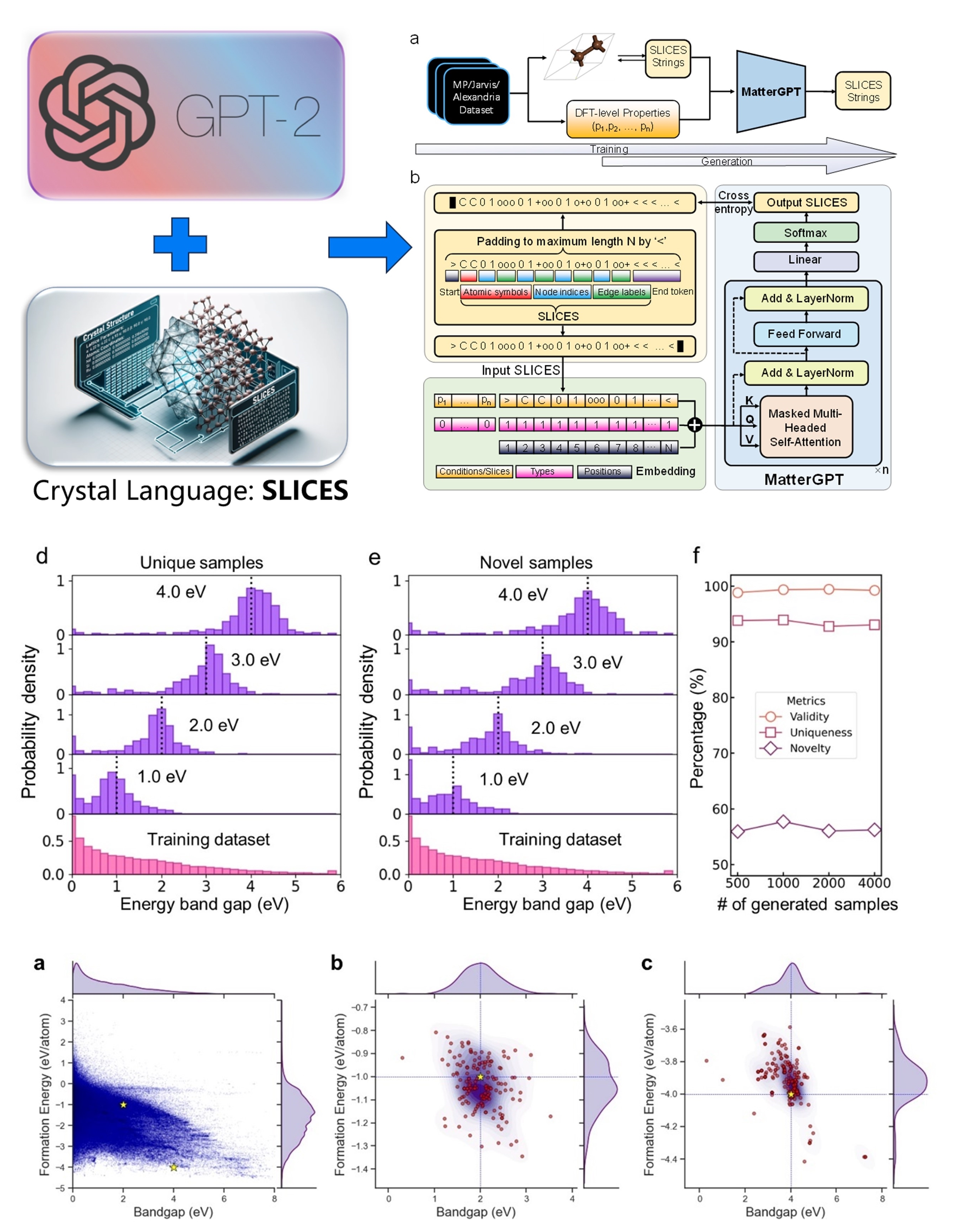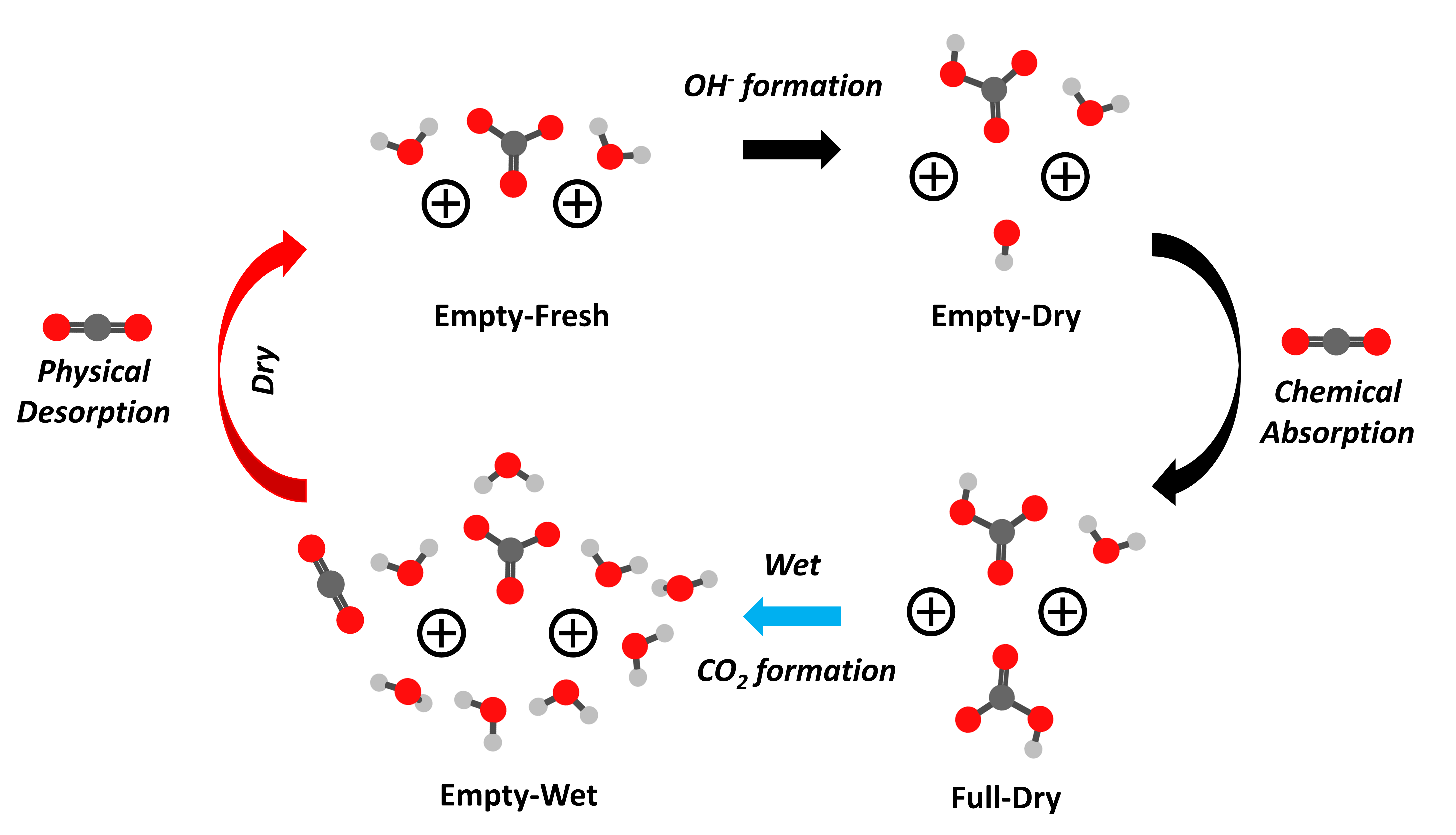Research
A growing collection of our cool projects.

1. MatterGPT:a GPT2-based large language model for multi-property inverse design of crystal structures.
Our research is centered on advancing the field of computational materials discovery by pioneering generative artificial intelligence for the inverse design of crystalline materials. We aim to provide a powerful and precise framework for generating novel solid-state materials with tailored properties and structures on-demand. A key aspect of our work involves the development of SLICES, an invertible and invariant “crystal language” that enables the application of state-of-the-art transformer models. This foundation allows our custom-built generative model, MatterGPT, to effectively learn the complex grammar of crystal structures and their intrinsic relationship to physical properties.
We investigate the conditional generation of materials targeting both lattice-insensitive properties, such as formation energy, and lattice-sensitive properties, like energy band gap. Crucially, we address the challenge of controlling spatial symmetry—a significant inductive bias often overlooked in generative design—by introducing SLICES-PLUS, an enhanced representation that explicitly encodes symmetry operations. This allows us to target specific crystal systems with high fidelity. Additionally, we extend our framework to sophisticated multi-objective design problems, demonstrating the simultaneous generation of crystals that meet multiple property criteria, such as specific formation energies and band gaps, or the targeted design of cubic crystals with desired bulk and shear moduli in a few-shot learning context.
selected publications

2. SLICES: An invertible, invariant crystal language for inverse design of solid-state materials using GenAI
The Problem: Unlike the field of molecular design, which has rapidly advanced thanks to representations like SMILES, the inverse design of crystalline materials has been hindered by the lack of an invertible and invariant representation.
The Solution (SLICES): To solve this, researchers developed the Simplified Line-Input Crystal-Encoding System (SLICES), a string-based representation that guarantees invariance by encoding only chemical composition and topology. It demonstrated unprecedented invertibility, with a 94.95% reconstruction success rate for over 40,000 diverse crystal structures. This enables the use of generative models like MatterGPT for the inverse design of crystals with target properties such as energy above hull and band gap.
Further Improvement (SLICES-PLUS): While effective, SLICES did not explicitly control for spatial symmetry, often leading to the generation of low-symmetry materials. To address this, SLICES-PLUS was developed. It enhances the original SLICES string by appending encoded information about the crystal’s spatial symmetry operations (rotation matrices and translation vectors) derived from Wyckoff positions. This enhancement allows models to precisely target and control both the physical properties and the crystal system (e.g., cubic) of the generated materials.
selected publications
other references

3. When Strong Bases Act Weak: Nanoscale Hydration Governs Humidity-Swing CO₂ Capture
Understanding how ion hydration changes under confinement is crucial for designing next-generation direct air capture (DAC) sorbents. Early computational and experimental work showed that incomplete hydration shells inside nanopores drive the spontaneous hydrolysis of carbonate, enabling moisture-swing CO₂ uptake on anion-exchange resins and related porous supports. Building on this paradigm, we recently theoretically studied guanidine, a prototypical super-base (pKₐ ≈ 13.6), in clusters containing only one to eight water molecules. Ab-initio free-energy profiles reveal that limited water severely suppresses proton abstraction, so guanidine can no longer generate OH⁻; under nanoconfinement it therefore behaves as a weak base.
Strikingly, this counter-intuitive prediction was confirmed by ambient-pressure experiments: per-alkylated guanidines capture nearly one mole of CO₂ per mole base only in moist air and release it quantitatively once the residual water is evaporated at 70 °C, achieving a working capacity of 4.5 mol kg⁻¹ with a minimal 45 °C temperature swing.
These results extend the humidity-swing concept from weak inorganic bases to strong organic bases, uncovering a universal “hydration tuning” mechanism that converts base strength into a controllable switch. Elucidating this nanoscale chemistry opens a path to scalable, low-energy DAC materials guided by rational hydration design.
selected publications
- Phys. Chem. Chem. Phys. 23, 14811–14817 (2021)
- Energy Fuels 33, 6562–6567 (2019)
- Joule 4, 1823–1837 (2020)
- Phys. Chem. Chem. Phys. 19, 27435–27441 (2017)
- Angew. Chem. 128, 4094–4097 (2016)
other references